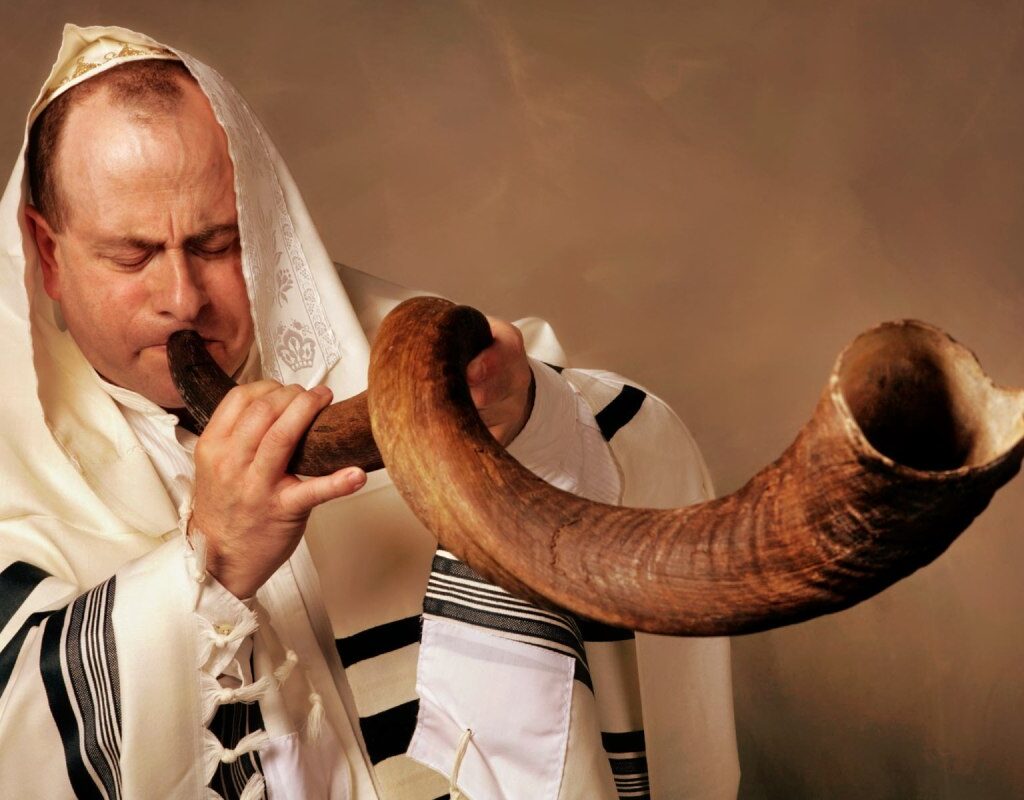Blessing the Omer: A Tradition of Profound Meaning
The Omer blessing is recited during the 49 days connecting Passover’s freedom to Shavuot’s spiritual revelation.
The blessing to be recited is as follows:
“Baruch atah Adonai, Eloheinu Melech haolam, asher kidshanu b’mitzvotav v’tzivanu al sefirat ha’omer”
Translation: “Blessed are You, Lord, King of the universe, who has sanctified us with Your commandments and commanded us to count the Omer.”
For the count to be valid with a blessing, two requirements must be met:
- Perform the count during the night.
- Not have interrupted the daily count at any point.
If the count is missed for a full day and then resumed the following night, it should continue without reciting the blessing.
It is crucial to respect this tradition and properly pronounce the blessing during the counting of the Omer, which not only fulfills a religious precept but also strengthens our connection to the traditions and history of our faith, reminding us of the importance of observance and respect for our religious practices.
Accuracy in Counting the Omer: A Mandate of Completeness
Accuracy in counting the Omer is crucial due to the Torah’s prescription that the seven weeks be “complete”. If a day is missed in the count, various rabbinical authorities hold that the period is no longer considered complete, which prevents continuing to count with a blessing.
This rigor underscores the seriousness with which the counting of the Omer should be conducted, as even a single missed day can significantly affect the observance of this tradition.
The Period of Mourning and Reflection in the Omer
This time is also observed as a period of mourning and reflection, stemming from a Talmudic account of Rabbi Akiva, whose 24,000 students died due to a lack of mutual respect.
As a result, during the Omer, celebrations such as weddings are avoided and abstaining from listening to instrumental music, cutting hair or shaving is practiced, except for professional reasons. These practices foster an environment conducive to introspection.
Each day of the Omer is also associated with one of the seven Kabbalistic sefirot, offering a daily opportunity for spiritual growth in specific aspects of character and conduct.
The 48 Ways to Acquire the Torah
The “48 Ways to Acquire the Torah” represents a profound and multifaceted framework for personal and spiritual development in Judaism.
These paths are outlined in the Talmud, specifically in the tractate Pirkei Avot (Ethics of the Fathers) and are considered essential practices and qualities that facilitate learning and deep understanding of the Torah.
During the period of the Omer, which is a time dedicated to spiritual preparation and purification for receiving the Torah on Shavuot, the study of these paths is particularly relevant. Each path offers a unique dimension of character or behavior that, when cultivated, can help deepen an individual’s connection with the teachings of the Torah. Some of these paths include:
- Careful study: involves dedication to a meticulous and detailed examination of texts.
- Attentive listening: being a good listener, absorbing and reflecting on what is learned.
- Articulate speech: developing the ability to clearly express one’s thoughts and teachings.
- Heartfelt understanding: understanding not only intellectually but also emotionally.
- Reverent awe: maintaining a sense of reverence and respect towards wisdom and commandments.
- Humility: recognizing the vastness of the Torah and one’s place within its study.
Rabbi Noah Weinberg, a prominent Jewish educator and founder of Aish HaTorah, developed a series based on these paths that include explanations, examples and practical applications for everyday life. His work, available in text and audio formats, makes these concepts accessible and applicable, allowing individuals a structured method to approach the study of the Torah and its integration into daily life.
Rabbi Weinberg’s approach not only helps individuals prepare to “receive the Torah” in a literal sense during Shavuot but also cultivates qualities and behaviors that are valuable in all aspects of life. Thus, the study of the 48 ways becomes a powerful tool for personal growth and spiritual transformation, enriching the religious and ethical life of Jews who embark on this journey of learning and self-improvement.
Lag BaOmer: A Celebration of Light and Spiritual Legacy
Lag BaOmer is a significant celebration within the Jewish calendar, marking a point of light and joy in the period of reflection and semi-mourning of the Omer. The day primarily commemorates two historical and spiritual events: the death of Rabbi Shimon bar Yochai, a Talmudic sage and mystic who revealed the secrets of the Kabbalah through the Zohar and the cessation of the plague that killed Rabbi Akiva’s students during the same period.
The Meaning of the Holiday
Rabbi Shimon bar Yochai
The central figure of Lag BaOmer is Rabbi Shimon bar Yochai, who is celebrated as a luminary of Jewish mysticism. It is said that on the day of his death, he revealed the deepest mystical secrets of the Zohar. In Jewish tradition, this day is not seen as a time of sadness, but as a “Hilula”, a celebration of his life and teachings. The practice of lighting bonfires symbolizes the spiritual light and wisdom that Rabbi Shimon bar Yochai brought into the world.
Meron
In Meron, the city where his tomb is located, large crowds gather to celebrate Lag BaOmer. Pilgrims participate in singing, dancing and lighting bonfires, creating an atmosphere of festivity and deep spirituality. The congregation in Meron is a physical and spiritual manifestation of respect and devotion to Rabbi Shimon.
Traditions of Lag BaOmer
In addition to pilgrimages to Meron, Lag BaOmer celebrations include various customs that reflect its rich symbolism:
- Bonfires: Bonfires are lit in many communities, symbolizing the spiritual light and mystical fire of Rabbi Shimon’s teachings. The flames remind students and communities of the enlightenment that comes through study and devotion.
- Archery: In some communities, children practice archery, an act that symbolizes the struggle against evil impulses and the distance between man and his Creator, which must be shortened through the study and practice of the Torah.
- Haircuts: Many parents wait until Lag BaOmer to cut their children’s hair for the first time, in a ceremony known as “Upsherin”. This marks the child’s entry into the age of education and Torah learning.
Spiritual and Community Significance
Lag BaOmer provides an opportunity for the Jewish community to unite in celebration and remembrance, strengthening the connection to their spiritual and mystical roots. Through its rituals and traditions, participants reaffirm their commitment to the values and teachings of the Torah, celebrating the persistence of the Jewish spirit across generations.
As we conclude the counting of the Omer, we emerge strengthened and more connected to our roots and traditions. This practice not only commemorates a historical period but also propels us towards continuous and meaningful personal growth.




